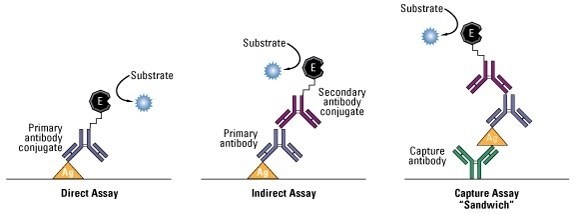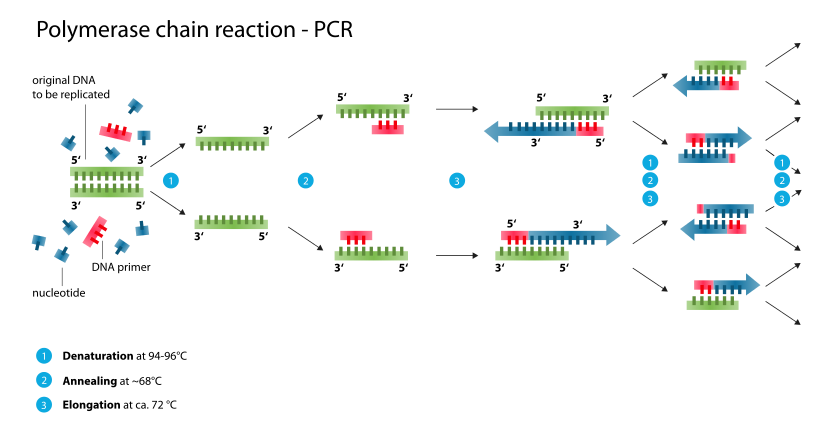Comparing ELISA and PCR methods For Testing for Allergens
Food is an integral part of life. How the food is obtained and processed is just as important as sitting down to eat a meal. The general public relies on accurate packaging labels, as a mishap could be dangerous to consumers. Companies who mass produce both allergen and allergen-free food products on the same processing lines are in danger of putting an allergic individual at risk. Microbac Laboratories has methods that can help aid companies in discovering the source of the issue. These tests involve the Enzyme-Linked Immunosorbent Assay (ELISA) and the Polymerase Chain Reaction (PCR) methods and serve as a safety net to products and future buyers. Which method should be used? Microbac has the answer.
Food Allergens: A Background
Product testing in the food industry has been historically centered on detecting microbial and chemical contaminants, which can cause outbreaks of illness. Today’s highly automated processing puts food at risk of additional contaminants, such as food allergens. Food allergens are one of the leading causes of product recalls.
Since 2005, the FDA has required manufacturers to label their products with the “Big-Eight” allergens, which are:
- Milk
- Eggs
- Fish
- Shellfish
- Tree nuts
- Peanuts
- Wheat
- Soybeans
Sesame is under review as the next possible allergen, and some manufacturers already declare sesame as an allergen. The Big-Eight allergens are responsible for over 90% of the documented food-allergen related cases. The National Institutes of Health estimate 4% of adults and 5% of children in the United States have a food allergy.
The Problem with Processing Lines
Processing lines during manufacturing and packaging create issue concerning allergens. Food products containing allergens may be processed on the same lines as allergen-free foods. This can result in contaminated allergen-free products and put allergy-sensitive individuals at risk. Allergen contamination during shipping of ingredients is another concern where bulk storage is used. Solutions to these issues can be achieved through testing.
The ELISA Method

Image Source: Microbe Online
The Enzyme-Linked Immunosorbent Assay (ELISA) method is the most common and preferred technique in detecting food allergens. ELISA methods detect the allergen protein molecule by binding antibodies to the allergen. The samples are processed and change color to confirm the presence of the allergen protein. However, ELISA methods may not provide reliable results depending on the situation. Some food types interfere with the ELISA method or can cause cross-reactivity, as is seen with chocolate or different kinds of nuts. The ELISA method may not be suitable for cooked or heated products, as the protein molecules are destroyed or broken down. The allergen may no longer be detectable but can still cause problems for sensitive individuals.
The PCR Method

Image Source: Wikipedia
Polymerase Chain Reaction (PCR) methods are an alternative to the ELISA methods. If the allergen is not detected, PCR is used. PCR is more sensitive and detects the DNA molecules of allergens in raw and cooked products and is not affected by the heating process. PCR methods are not impacted by the interferences that affect ELISA-based methods, as the DNA is purified away from other proteins or organic material before analysis begins. PCR, however, cannot be used on all products. Products such as oil, milk, or egg whites cannot be tested by PCR because they do not contain DNA. These products must instead be tested using ELISA based methods for allergen detection.
In short, the ELISA method detects the specific protein molecule of the allergen. PCR detects the DNA molecules of allergens. It cannot trace products that do not have DNA.
Benefits of Safe Food Testing
Both ELISA and PCR techniques detect the food allergen at a molecular level and provide quick and definitive results. Testing is done on a finished product or with environmental swabs. The results allow the manufacturer to dispose of or re-label the contaminated product before it is released. Results also encourage that corrective actions may be needed for environmental monitoring programs. Testing for food allergens with ELISA and PCR methods provides manufacturers with the information they need to protect the public and their brand.
Microbac Laboratories offers over 35 ISO 17025-accredited tests (both ELISA and PCR based) for allergens in raw ingredients to finished product and environmental swabs. Our team will help you move your product through production and safely into the hands of consumers.
Works Cited: National Institutes of Health: https://www.nih.gov/

